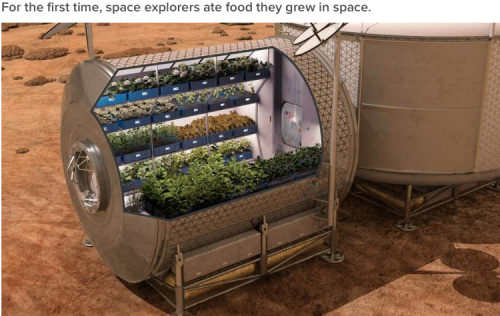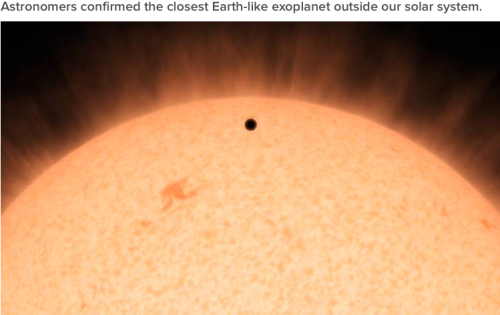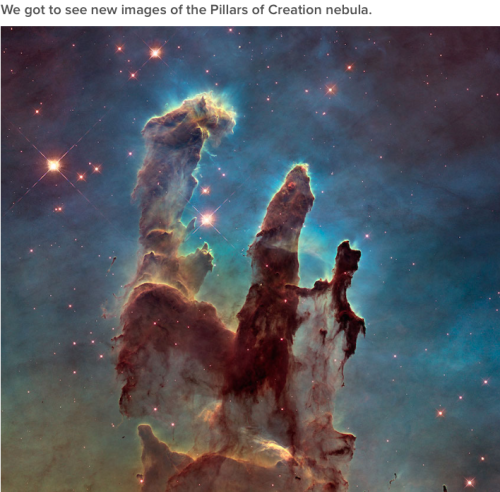The Beauty Of Earth

The Beauty of Earth
More Posts from Space-m17-blog and Others






Illustration by Jean Luc Beghin for the 1970 edition of Spirou.
The top-right text says the image doesn’t depict any particular moment during the Apollo missions but that the two astronauts were picked arbitrarily: Frank Borman, commander of Apollo VIII (the first mission to fly around the moon) and Neil Armstrong, commander of Apollo XI (and the first person to walk on the moon).
I cleaned this image up a bit and the source-file can be found here, as well as other high definition scientific illustrations.




The first two images are tesseracts and the second two are 4D spheres. 1 Dimension: in a universe with one dimension, particles can only move in a line so from left to right not up and down. _____________________________
2 Dimensions: this is made up of an infinite amount of 1D universe and particles would be able to to move in two dimensions, up down left and right. Now if there was an organism living in a 2 dimensional it would see things in 1 dimension just like we see things in 2 dimensions and our brain is what is able to interpret depth by using two eyes and our brain. When we hold our finger in front of our face and move it, we can see that it appears to have moved relative to the background. Our brains see this difference and this allows us to estimate how far away they are. In a 2D universe there would be no background as such to see the “finger” moving against so it would be seen in 1D although it’s impossible to visualise anything in 1 dimension.
3 Dimensions: we live in 3 spatial dimensions in our universe which is made up of an infinite amount of 2D universes. We see things in 2 dimensions. A common misconception is that time is the 4th dimension but it doesn’t really make sense because it is present in every spatial dimension.
4 Dimensions: this is almost impossible to try and visualise. There are some people who claim they can think in 4 and even more dimensions. Now, a 4th dimensional organism would see things in 3 dimensions. If they came to our universe then they would be seeing absolutely every line of every shape but it wouldn’t be possible for a 4D being to like in 3D, it would be like us living in 2D. Above I have some 4D shapes to give you an idea of how we can represent them. It’s better to watch the inks though.
http://youtu.be/-x4P65EKjt0 http://youtu.be/5BF-ygCbmD8

Introducing Ethiopia’s just born Space research programme
High above the crowded streets of Addis Ababa, among fields where farmers lead oxen dragging wooden ploughs, sits Ethiopia’s space programme.
Perched at the top of the 3200m-high Mount Entoto, two metal domes house telescopes, each a metre in diameter. In operation for only a few months, they have propelled Ethiopia into an elite club of African countries to have embarked on a space programme.
Its programme is aimed at giving the country a technological boost that will aid its already rapid development.
“Science is part of any development cycle,” says Abinet Ezra, spokesman for the Ethiopian Space Science Society. “Without science and technology nothing can be achieved.
“Our main priority is to inspire the young generation to be involved in science and technology.”
The society, funded by Ethiopian-Saudi business tycoon Mohammed Alamoudi, was set up in 2004 to promote astronomy. But its supporters have had a tough ride setting up the space programme.
For the past decade, a handful of enthusiasts - including Solomon Belay, director of the observatory and a professor of astrophysics - battled with the authorities to convince them that, in a country that is still one of the poorest in the world, where malnutrition is still a threat, the exploration of space is not a luxury. Ethiopian strongman Meles Zenawi, who died in 2012, considered them dreamers.
“People said we were crazy,” says Belay.
The R39-million space observatory is, above all, a symbol. The site at Entoto, often hidden by clouds during the rainy season and close to the lights of Addis Ababa, struggles to compete with the world’s major observatories, including the far larger Southern African Large Telescope in South Africa.
But Ethiopia has plans, including to build a far more powerful observatory in the northern mountains around Lalibela, far from city lights.
The government hopes to launch a national space agency - and to put an Ethiopian satellite in orbit within five years, for the monitoring of farmland and to boost communications.
“We are using space applications in everyday activities, for mobile phones, weather - space applications are fundamental,” says Kelali Adhana, the International Astronomical Union chief for East Africa, based in Ethiopia. “We cannot postpone it, otherwise we allow ourselves to live in poverty.”
At Ethiopia’s Institute of Technology, in the northern town of Mekelle, scientists plan to test the first Ethiopian rocket to go more than 30km, although that is still far from the 100km frontier beyond which the Earth’s atmosphere gives way to space proper.
New video! Dark nebulae in a nutshell!
Follow Evanthorizon for more astronomy posts!










If you couldn’t tell already, NASA is having a great year. From Pluto to food grown in space, even in the face of budget cuts, the nation’s space agency had some stellar highlights. Most mysteriously of all, a spacecraft found two eerily bright lights on a distant dwarf planet.
Why do we explore? Simply put, it is part of who we are, and it is something we have done throughout our history. In “We Are the Explorers,” we take a look at that tradition of reaching for things just beyond our grasp and how it is helping us lay the foundation for our greatest journeys ahead. So what are we doing to enable exploration? We’re building the Orion spacecraft is built to take humans farther than they’ve ever gone before. Orion will serve as the exploration vehicle that will carry the crew to space, provide emergency abort capability, sustain the crew during the space travel, and provide safe re-entry from deep space return velocities. Orion will launch on NASA’s new heavy-lift rocket, the Space Launch System.
Also underway, is Astronaut Scott Kelly’s Year In Space. Kelly is living and working off the Earth, for the Earth aboard the station for a yearlong mission. Traveling the world more than 220 miles above the Earth, and at 17,500 mph, he circumnavigates the globe more than a dozen times a day conducting research about how the body adapts and changes to living in space for a long duration.

In case you missed it earlier in July, here’s a look at how our view of Pluto has changed over the course of several decades. The first frame is a digital zoom-in on Pluto as it appeared upon its discovery by Clyde Tombaugh in 1930 (image courtesy Lowell Observatory Archives). The other images show various views of Pluto as seen by NASA’s Hubble Space Telescope beginning in the 1990s and NASA’s New Horizons spacecraft in 2015. The final sequence zooms in to a close-up frame of Pluto released on July 15, 2015.
This amazing view of details on Pluto came via New Horizons, which launched on Jan. 19, 2006. New Horizons swung past Jupiter for a gravity boost and scientific studies in February 2007, and conducted a reconnaissance flyby study of Pluto and its moons in summer 2015. Pluto closest approach occurred on July 14, 2015. As part of an extended mission, the spacecraft is expected to head farther into the Kuiper Belt to examine one or two of the ancient, icy mini-worlds in that vast region, at least a billion miles beyond Neptune’s orbit.
Image credits available here.

http://angelwolf92.deviantart.com/

js

M22 globular cluster
js
-
 zeeseventeen reblogged this · 6 years ago
zeeseventeen reblogged this · 6 years ago -
 wounded-ronin reblogged this · 6 years ago
wounded-ronin reblogged this · 6 years ago -
 zippy6958 liked this · 6 years ago
zippy6958 liked this · 6 years ago -
 archangelisk451 reblogged this · 6 years ago
archangelisk451 reblogged this · 6 years ago -
 archangelisk451 liked this · 6 years ago
archangelisk451 liked this · 6 years ago -
 nisamdobro liked this · 6 years ago
nisamdobro liked this · 6 years ago -
 visiting-alien liked this · 6 years ago
visiting-alien liked this · 6 years ago -
 ajc18615425 liked this · 6 years ago
ajc18615425 liked this · 6 years ago -
 ziraconaxenon liked this · 6 years ago
ziraconaxenon liked this · 6 years ago -
 superpotatosticks liked this · 6 years ago
superpotatosticks liked this · 6 years ago -
 crystallinewolff reblogged this · 6 years ago
crystallinewolff reblogged this · 6 years ago -
 zinadupree liked this · 6 years ago
zinadupree liked this · 6 years ago -
 elizabethtaylor9 liked this · 6 years ago
elizabethtaylor9 liked this · 6 years ago -
 benjaminblueforever liked this · 6 years ago
benjaminblueforever liked this · 6 years ago -
 n3k0c0 liked this · 6 years ago
n3k0c0 liked this · 6 years ago -
 555casitas liked this · 6 years ago
555casitas liked this · 6 years ago -
 etceterodactyl reblogged this · 6 years ago
etceterodactyl reblogged this · 6 years ago -
 chaoticosmicstardust-blog liked this · 6 years ago
chaoticosmicstardust-blog liked this · 6 years ago -
 failure-at-being-respectable liked this · 8 years ago
failure-at-being-respectable liked this · 8 years ago -
 frozen-heart-in-a-summer-da-blog liked this · 8 years ago
frozen-heart-in-a-summer-da-blog liked this · 8 years ago -
 frozen-heart-in-a-summer-da-blog reblogged this · 8 years ago
frozen-heart-in-a-summer-da-blog reblogged this · 8 years ago -
 andystoys44 reblogged this · 9 years ago
andystoys44 reblogged this · 9 years ago -
 keekskeek reblogged this · 9 years ago
keekskeek reblogged this · 9 years ago -
 dontjudgeatattoobyitscover reblogged this · 9 years ago
dontjudgeatattoobyitscover reblogged this · 9 years ago -
 kekemeowxx reblogged this · 9 years ago
kekemeowxx reblogged this · 9 years ago -
 nickasian92 reblogged this · 9 years ago
nickasian92 reblogged this · 9 years ago -
 fireyturtle liked this · 9 years ago
fireyturtle liked this · 9 years ago -
 spraypaintedsoul-blog reblogged this · 9 years ago
spraypaintedsoul-blog reblogged this · 9 years ago -
 purezynz reblogged this · 9 years ago
purezynz reblogged this · 9 years ago -
 a-dreamers-tales reblogged this · 9 years ago
a-dreamers-tales reblogged this · 9 years ago -
 nintendovevo liked this · 9 years ago
nintendovevo liked this · 9 years ago -
 nintendovevo reblogged this · 9 years ago
nintendovevo reblogged this · 9 years ago -
 wellthatneverhappens liked this · 9 years ago
wellthatneverhappens liked this · 9 years ago
I love space. I've been to space camp in Huntsville Alabama and I am planning on going every summer. I look forward to be an astronaut for nasa on the sls that is planned to be launched 2018. And the manned mission 2030. So yeah I won't let anything get in my way.
138 posts